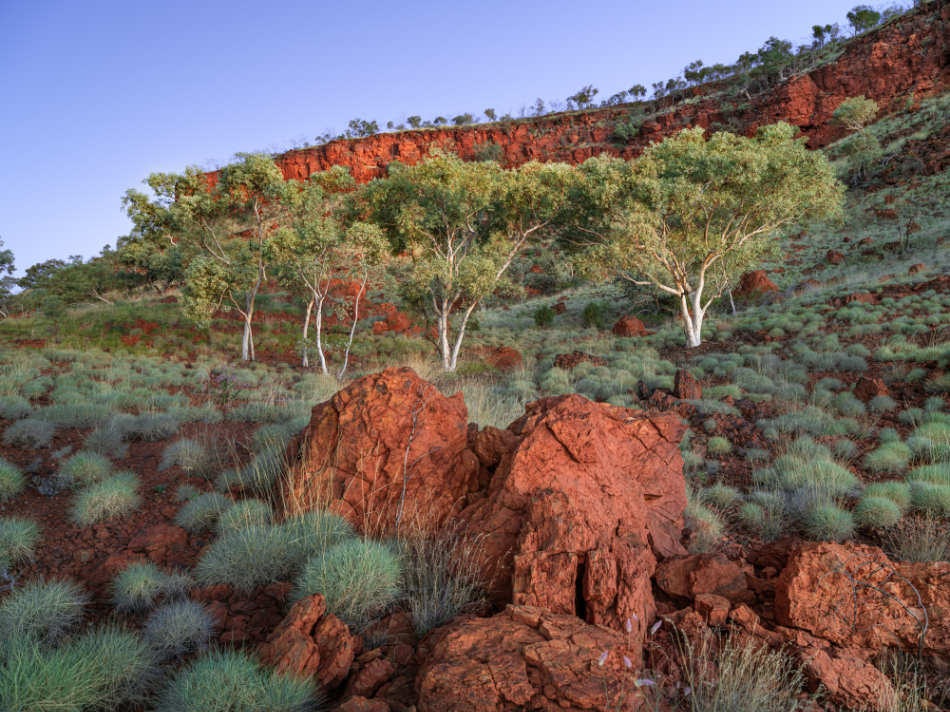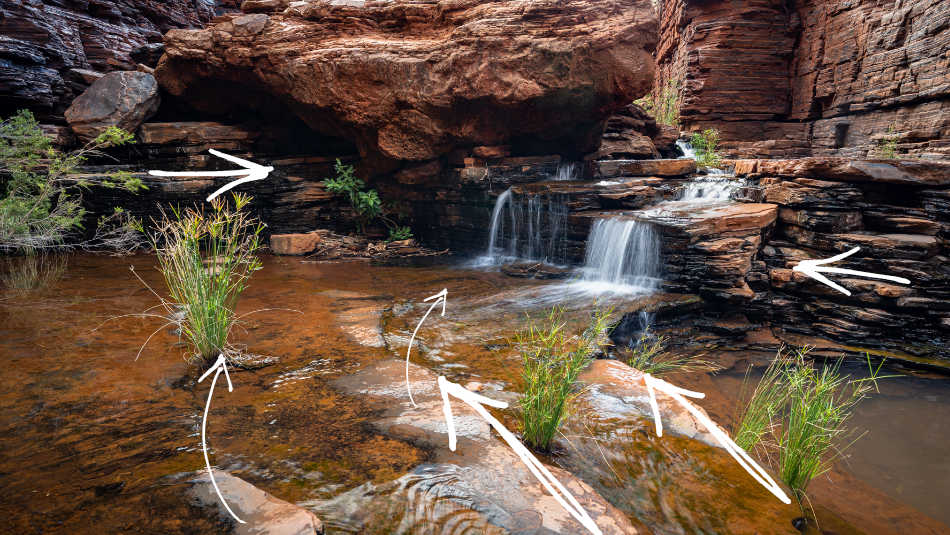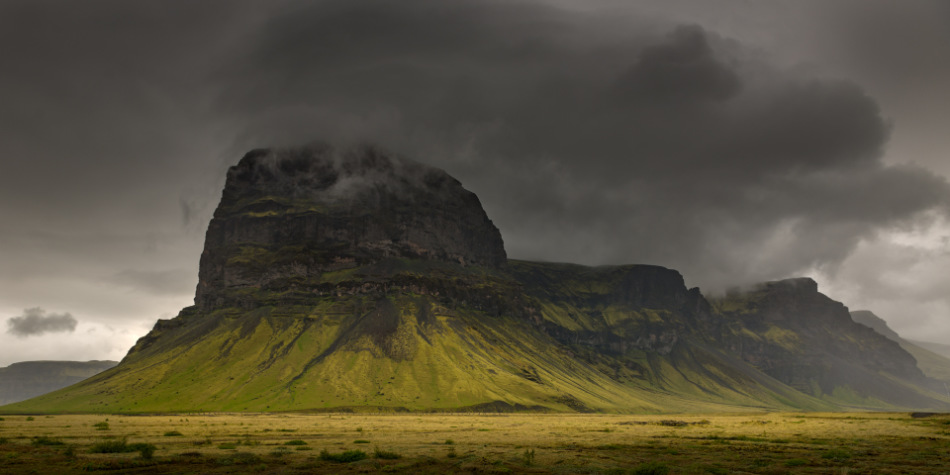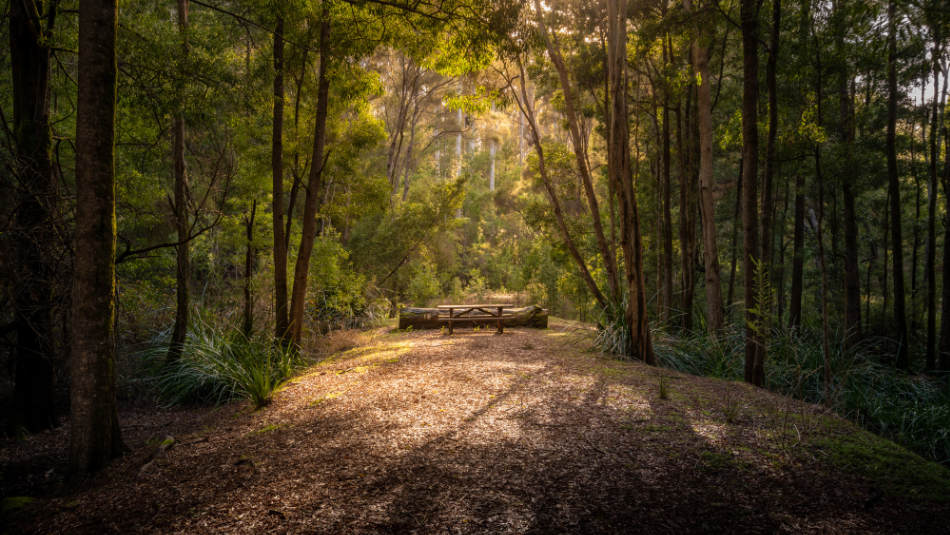I speak to many people in my workshops who want to know how they can improve the landscape photos they take.
I usually provide feedback about the composition of their images.
However, it can be challenging to understand what composition is in landscape photography and how it can improve the pictures you take.
Composition is which elements you choose to include in the frame and how the elements are arranged in the photo. An effect composition defines the story in the picture, can build perceived relationships between features and guides the viewer’s eye through the image.
Composition is one of the five core principles of landscape photography, along with location, light, capture, and editing.
Besides selecting the camera settings, the composition chosen is the main factor in the photographer’s control that influences whether a landscape picture is impactful by engaging the viewer.
To find better composition in the field, it’s critical to appreciate how it can improve or weaken a landscape image.
Composition Determines What the Photo is About
As mentioned previously, part of composing a scene is choosing what elements are included in the frame and which are not included.
By determining what part of the landscape and its features to include in the image, you decide what the photo will be about.
Essentially, this is the basis of the story you are capturing.
Powerful images often have a simple but strong story or message.
This is achieved through a composition that clearly identifies the main subject and portrays the story to the viewer.
Any elements that don’t add to the story or potentially distract the viewer should be excluded from the frame through the composition – we’ll talk a little more about that below.
Simple, minimalistic images are a great example of this, as usually only the main subject and elements that are directly related to the story are included in the photo.

I captured a simple image of a Blue Boat House in this shot. The boat house stands out to the viewer, clearly the main subject. Having no unnecessary elements in the picture helps this.
When you are composing your next landscape shot, consider if the elements and features of the landscape you include in the frame contribute to or are part of the story or primary focus of the image.
Composition Creates Relationships Between Elements
Stories are about relationships and interactions between characters.
In a landscape photo, the features of a natural scene are the characters of your story.
Moving your camera around can effectively reposition landscape elements within the frame and to one another, building relationships between landscape features in the viewer’s mind.

Where I captured this scene, there was a large area of ghost gum trees with white trunks that contrasted with the vivid blues and red of the Pilbara region.
While exploring the location, I found this group of ghost gums clustered together.
I positioned the camera so the group of trees was in the middle of the frame, creating a relationship between the trees. They look like a family or group of friends posing for a photo.
It took a few minutes to find the right angle for the camera, but the image is more powerful as a result because the trees and their relationship to one another is a strong focus for the viewer.
There is also a relation between the tree in the middle, the red rocks in the foreground, and the red cliffs in the background.
Positioning the trees between these two features helps the audience understand what landscapes these trees grow in.
Composition Controls How the Viewer is Guided Through the Image
While defining the story is essential, the composition also has a more practical role in improving your images and how the audience engages with them.
A landscape photo is more satisfying to the viewer if you encourage their eye to move around the scene.
There are two aspects to this function of composition:
- A photo that encourages the viewer’s eye to move from one part of the image to another location is intrinsically more engaging as they are prompted to explore the landscape.
- The audience is effectively taken on a journey through the landscape by guiding the viewer through the picture. This is more pleasing to view and helps the viewer make sense of the scene.
There are several composition techniques that you can use to encourage the viewer’s eye through a photographed scene.

The eye is more likely to follow along straight to curved lines, so finding naturally occurring lines in the scene will help encourage the viewer to move to another portion of the landscape.
The human eye instinctively moves from dark areas to parts of the scene that are more bright. Positioning your main subject in a brighter part of the photo will draw the viewer’s eye to that area of the picture.
We naturally pick up elements in the landscape closer to us, and then our eyes move to objects further away. That’s why scenes with some features close to the camera and others in the distance create depth and draw the audience into the image.
How Does Composition Improve Landscape Photos?
Composition helps enhance the story and storytelling in a picture.
There are four general areas where composition can improve the story in a landscape image and, in turn, improve the photo.
Define the Story
As mentioned previously, through the composition, you decide what is included in the frame and excluded, effectively defining the story.
Tell the Story
The composition determines how the story is told. Using a prominent foreground creates an enticing introduction for the image that the audience will initially notice. The viewer’s eye can then be guided into the rest of the picture along leading lines.
How you intend to take the audience through the image controls how you tell the landscape story through a photo.
Structure the Story
The composition can help lay out a scene so it’s easier for the audience to understand what they are looking at.
Using composition techniques like balance or the rule of thirds can help the viewer more easily identify landscape features, understand the scene, and make the picture more pleasing.

Enhance the Story
Making landscape features within the scene more pronounced through the composition can draw the audience’s attention to those elements.
The composition can also be used to dedicate a portion of the image to elements that give a sense of emotion or indicate how you felt standing in the location, like dark clouds or a colorful sunset.
What is a Good Composition in Landscape Photography?
An effective landscape composition introduces the scene and guides the audience through it to encourage the viewer to explore the landscape you’ve captured and discover its features and main subject.
A successful landscape image composition provides an engaging introduction to the photo through techniques like framing the scene or including appealing foreground elements.
Consider how the scene is introduced in the photo, as it should capture the audience’s attention. It is likely the first area in the picture the viewer’s eye goes to, so include elements with enticing colors or interesting patterns or details.
A compelling composition then takes the viewer on a journey through the scene, allowing the audience to discover the characteristics and features of the landscape themselves.
This inviting guide through the picture is often called the Flow of the image.

Leading lines are an effective composition technique I often use to guide the viewer’s eye through the scene. Like I’ve used here in this image. The edges of the path helps move the viewer towards the center.
I’ve also used other methods like shadows and light areas as the eye naturally moves from dark to bright parts of the image.
The composition determines what the image is about and impacts how the audience engages with the landscape picture.
A powerful composition lays out the scene so it’s pleasing to view, easy to understand, and provides a sense of how the location feels if the viewer was to experience it for themselves.
How to Improve Your Composition Skills?
As a landscape photographer, composition skills are critical, particularly if you want to capture and tell better stories through your images.
Here are some simple ways you can improve your composition skills.
Composition Techniques
Become aware of the standard composition techniques you can use to create better compositions.
Balance, symmetry, rule of thirds, framing, leading lines, use of light, checking borders, simplicity and white space are just some of the composition techniques used to improve how a scene is composed and how the story is told.
Understand the Impact of Composition
It doesn’t stop at just knowing a list of composition techniques.
You must understand how each technique can improve your composition and when to use them.
Start by identifying how you want to improve the scene and the story you’re telling, then choose the best technique to achieve that goal.
Practice Your Composition
Like any skill, the best way to develop your composition skills is to put the techniques into practice continually.
Find opportunities to compose scenes regularly.
You can practice on scenes other than natural landscapes. Instead, try composition techniques on urban or street scenes, or whatever is convenient, to develop your skills daily.
You don’t have to use your DSLR or Mirrorless camera.
Use your phone camera instead because it’s always with you.
Before long, your improved knowledge of composition will transfer to your landscape images.
Analyze the Compositions of Other Photographers
Take a closer look at some of your favorite photos from other photographers you admire.
Analyze their composition techniques and how they’ve pulled you in as a viewer.
See if you can identify why the composition works and its impact on the image.
Next time you’re out shooting, find opportunities to try similar techniques and see how they impact the photo.
QUICK RECAP
Composition is how the landscape features are arranged within your image.
The composition defines which elements are included and excluded in the photo.
You can build the story and create relationships between elements through the composition.
Using several composition techniques, you can help guide the viewer through the scene to different parts of the image.
Effectively composing scenes is critical to capturing successful and engaging landscape photos.
The composition can improve a landscape photo by defining, telling, structuring and enhancing the story.
